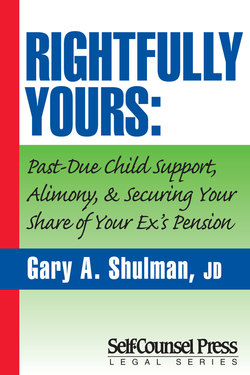Читать книгу Rightfully Yours - Gary A. Shulman - Страница 19
На сайте Литреса книга снята с продажи.
4. Congress Created QDRO Laws in 1984
ОглавлениеWhen Congress created the QDRO laws in 1984, its intent was to provide a vehicle for former spouses of pension plan participants to receive their rightful marital portion of their ex-spouse’s pension benefits. After all, the pension was a marital asset subject to equitable distribution on divorce. So Congress decided that if the courts held that a former spouse was the co-owner of the pension, it was about time to provide a mechanism for companies to be allowed to pay a portion of a participant’s pension benefits directly to a former spouse as called for in the divorce decree. Before QDROs came into existence in 1984, a plan participant’s rights to his own pension benefits was paramount and untouchable. Once vested, the benefits were nonforfeitable. No one but the participant could receive the benefits. Not even creditors could go after a participant’s pension benefits during a bankruptcy proceeding. ERISA’s anti-assignment provisions prevented this. (ERISA, the Employee Retirement Income Security Act of 1974, is the federal pension law that was designed to protect a plan participant’s pension benefits.) Participants could not assign a portion of their benefits to another party even if they wanted to.
In 1984, QDROs became the only exception to the anti-assignment provisions of ERISA. Now, for the first time, plan administrators were allowed to carry out the intentions of the divorce court. They were now permitted to divide the participant’s pension benefits into two components and then send a portion of the pension directly to the former spouse without having to worry about their plans being disqualified by the Internal Revenue Service.
Because no QDRO was ever prepared in Evelyn Schmidt’s case (see Section 1. above), she can never receive any of David Schmidt’s pension or 401(k) benefits, even though a portion of the benefits was deemed by the domestic relations court to be her own separate property right. This is because her ex-husband died before a QDRO was prepared. If he were still alive, it may not be too late to draft a QDRO now. See Chapter 15 for a discussion of options to consider if a QDRO was never drafted at the time of your divorce. Again, Evelyn’s only recourse at this time might be a malpractice suit against her attorney. Had her attorney taken one extra step during the divorce by having a QDRO prepared for the sole purpose of securing a portion of David’s pension benefits in accordance with the terms of her divorce decree, Evelyn’s future economic outlook would be much brighter today.
These horror stories should illustrate the importance of QDROs. Unfortunately, however, hundreds of thousands of women across the country could find themselves in Evelyn’s shoes one day. Are you one of them? Now that I have your attention, let’s learn a little bit more about this very important legal document called a QDRO.
